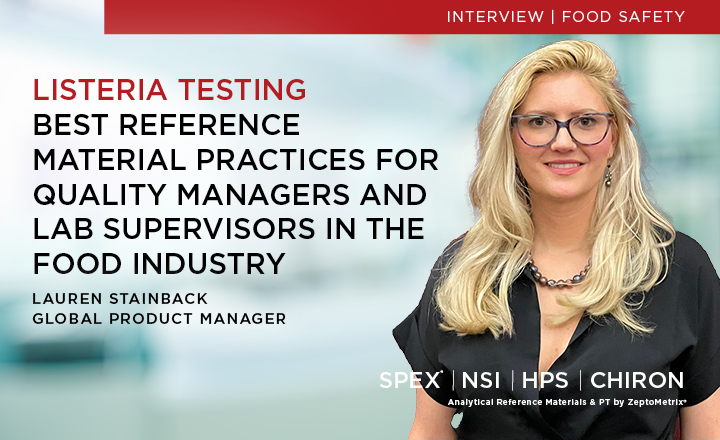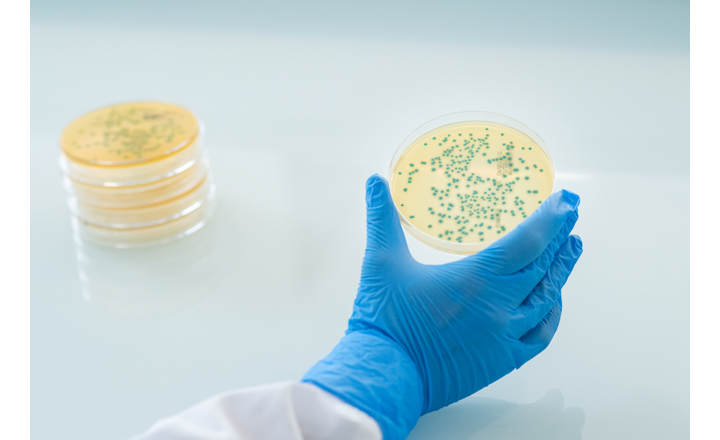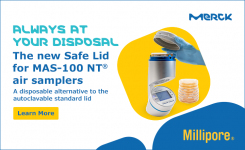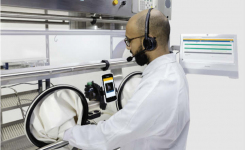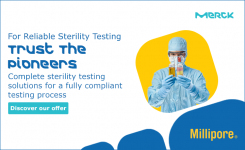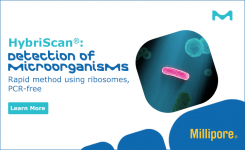L. monocytogenes is a Gram-positive, non-spore forming, rod-shaped bacterium, it is a ubiquitous organism, present in plants, soil and the guts of birds, fish, shellfish and some mammals, including humans. Some studies suggest that 1-10% of humans may be intestinal carriers of L. monocytogenes.
Listeriosis is a serious infection caused by Listeria monocytogenes. In recent years Listeria has been recognized as an important public health problem primarily affecting people of advanced age, pregnant women, newborns, and adults with weakened immune systems. It manifests in flu-like symptoms, fever, muscle aches, and sometimes gastrointestinal symptoms such as nausea or diarrhea. If infection spreads to the nervous system, symptoms such as headache, stiff neck, confusion, loss of balance, or convulsions can occur. A severe bout of the disease may also lead to blood poisoning, encephalitis and meningitis. Infected pregnant women may experience only a mild, flu-like illness but this can lead to miscarriage or stillbirth, premature delivery or infection of the newborn.
It is a relatively rare disease with 0.1 to 10 cases per 1 million people per year depending on the countries and regions of the world. Although the number of cases of listeriosis is small, the high rate of death associated with this infection makes it a significant public health concern.
Listeriosis affects approximately 6-7 cases per million people and has an extremely high (20-30%) mortality rate.
Listeria Risk and Prevention in the Food Industry
Foodborne listeriosis can be extremely serious and is often traced back to certain risk foods which includes raw or processed meat, raw milk products, raw or smoked fish, ready prepared salad and long stored vacuum-packed food.
Particular dangers include the ability to continue growing slowly at low pH values (pH 4.4) and in food with less water content and high preservatives, e.g. 10% NaCl. Listeria also demonstrates good growth in vacuum packaged or refrigerated food stored at 4 - 7 °C. In addition, Listeria has the ability to form a biofilm which is very difficult to eradicate using sanitizers and cleaning agents.
For these reasons, the food industry is still improving methods for the control of L. monocytogenes in food and food processing.
International Standards for Detection and Enumeration of Listeria monocytogenes and Listeria spp. in the food chain
Depending on geography and / or type of food, there are regulations to help ensure the safety of food in terms of Listeria contamination:
- ISO 11290-1:2017 Detection of L. monocytogenes and Listeria spp. in the food chain
- ISO 11290-2:2017 Enumeration of Listeria monocytogenes and Listeria spp. in the food chain
- USDA-FSIS (MLG 8.11, Feb 2019) Isolation and ID of Listeria monocytogenes from red meat, poultry, ready-to-eat fish and egg products, and environmental samples
- FDA-BAM Chapter 10, March 2017: Other foods Detection of Listeria monocytogenes in Foods and Environmental Samples, and Enumeration of Listeria monocytogenes in Foods
- Country Regulations e.g. Chinese GB 4789.30 Food examination Listeria monocytogenes (includes detection, enumeration and MPN methods)
Take 20 minutes and watch our presentation where we cover how to test food and environmental samples for Listeria monocytogenes, so you can stay compliant with international standards. There will be a particular focus on FDA-BAM, USDA-FSIS and ISO 11290-1 regulations and the correct culture media for the detection of Listeria monocytogenes in food.







